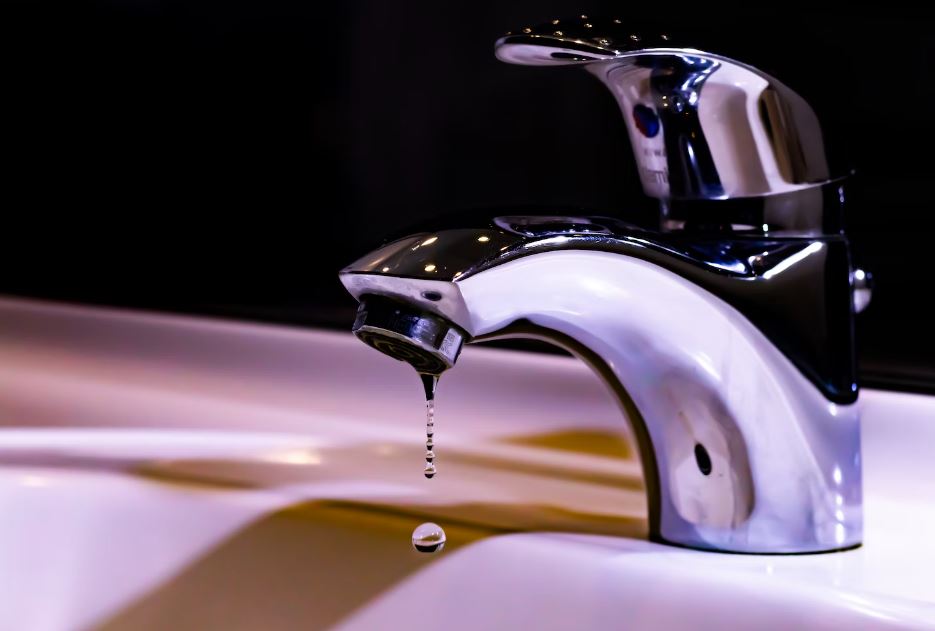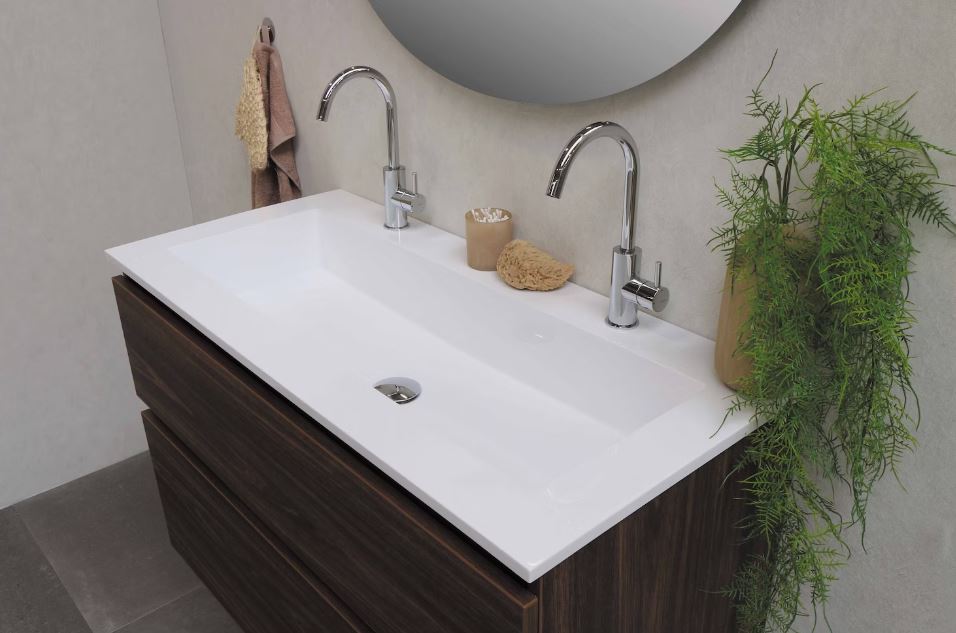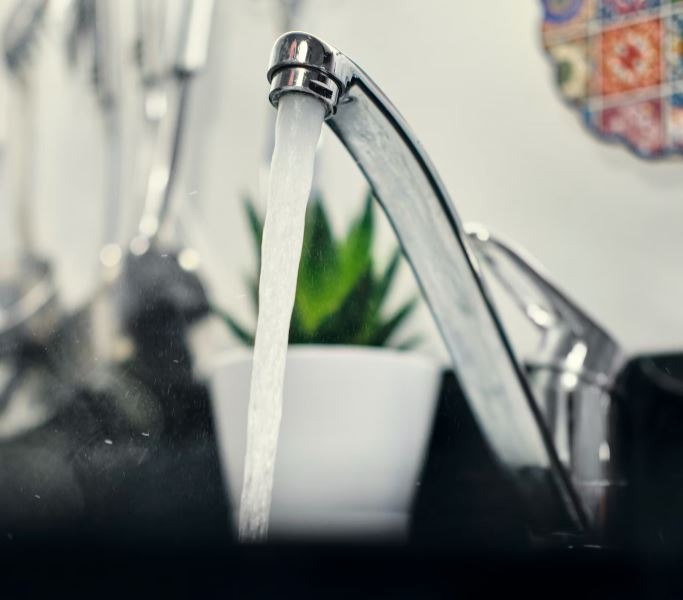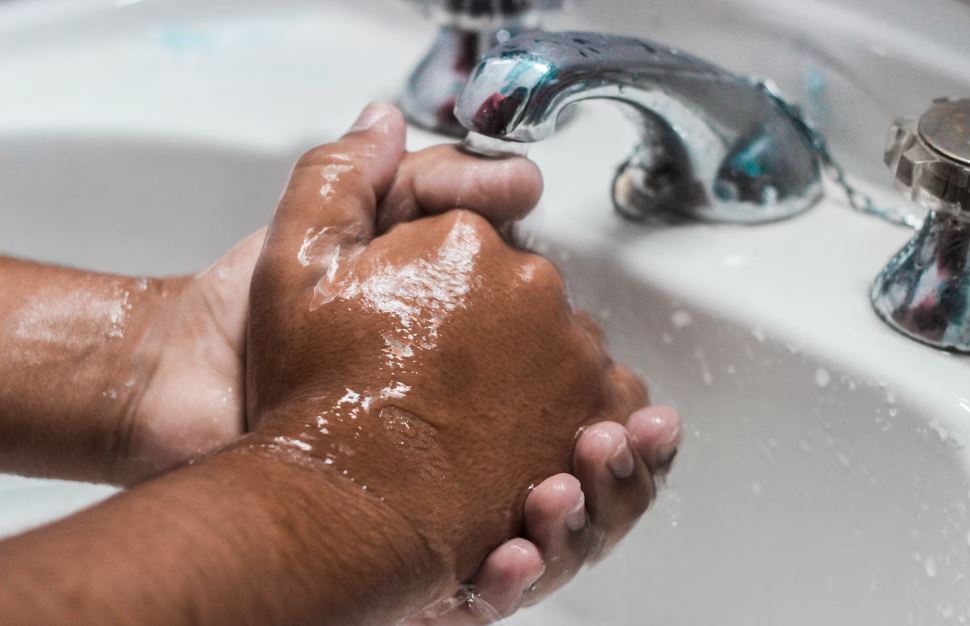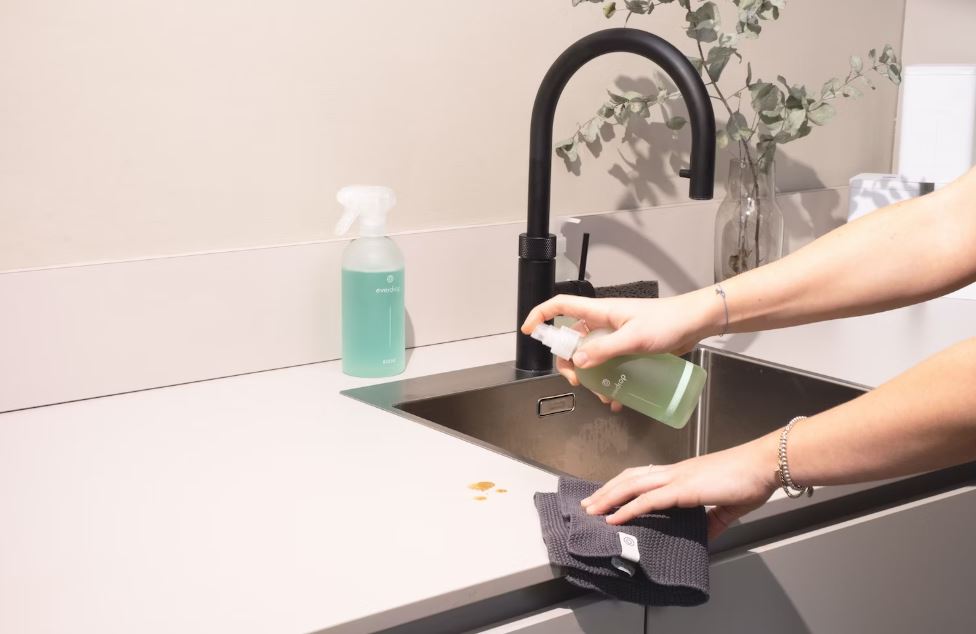Importance of Choosing the Right Faucet
When it comes to the design of bathrooms, even the smallest of details is important. When it comes to producing a cohesive and practical environment, every component, from the tiling to the fixtures, plays an important part. Among these, the humble faucet may appear to be an unimportant detail; however, its significance is not to be understated in any way. Your choice of faucet can have a significant impact, from an aesthetic standpoint as well as a practical one, on your bathroom.
Impact of Faucet Choice on Bathroom Aesthetics and Functionality
Your bathroom faucet is not only a practical appliance but also an important design element that can either contribute to or detract from the space’s overall appearance. In addition, the kind of faucet and the design of the faucet that you pick can have a direct influence on the way that you use the bathroom daily. When choosing the ideal faucet for your space, you should give careful consideration to a variety of factors, ranging from the amount of water that flows through it to how easy it is to operate.
Types of Bathroom Faucets
Single-handle faucets
Features and Benefits
As the name suggests, faucets with a single handle consist of a single lever or knob that regulates both the amount of water that is dispensed and the temperature of the water. These faucets are well-known for their streamlined and contemporary appearance, lending your bathroom an air of understated sophistication. The simplicity of operation is one of the primary benefits of having a faucet with only one handle. The water flow and temperature can both be easily adjusted with just one handle, making it convenient for users of any age. In addition, single-handle faucets are typically outfitted with cutting-edge technologies such as temperature control and water-saving features, which contribute to their high level of functionality and ease of use.
Suitable Bathroom Styles
The versatility of single-handle faucets allows them to be used in conjunction with a wide variety of different types of bathroom designs. They are especially suited for use in contemporary and modern bathrooms, which provide the ideal backdrop for their streamlined appearance and understated layout. However, they can also be incorporated into settings that are transitional or even traditional, lending a hint of modernity without competing with the furnishings that are already there. Whether you have a small powder room or a large master bathroom, a faucet with a single handle can be a stylish and practical addition to the space.
Double-Handle Faucets
Features and Benefits
Double-handle faucets, which are also referred to as two-handle faucets, have individual handles for controlling the temperature of the hot and cold water streams. These faucets have a traditional design that will never go out of style and can lend an air of sophistication to any lavatory. The enhanced level of temperature control afforded by faucets with two handles is widely regarded as one of the most significant advantages of these fixtures. Because they are controlled by separate knobs, the hot and cold water can be easily adjusted to the perfect temperature for each user. This may be of utmost significance when performing activities that call for a certain temperature of water, such as washing one’s face or hands. Additionally, because double-handle faucets typically have a more robust construction, they are an excellent option for bathrooms that get a lot of use because they are very long-lasting. They typically have a longer lifespan as well because each handle operates independently, which reduces the amount of wear and tear that is placed on the various components.
Suitable Bathroom Styles
Traditional bathrooms and those with a vintage style will benefit from having faucets with two handles. The timelessness of their designs makes them a lovely addition to the aesthetics of these various styles. They are also an excellent option for use in bathrooms that have a transitional design, where they can act as a statement piece that bridges the gap between traditional and contemporary design elements. If you want your bathroom to have a classic look, installing a faucet with two handles can be an important step toward realizing your vision for the space.
Wall-mounted faucets
Features and Benefits
Faucets that are mounted on the wall are a unique design option in which the fixture is attached to the wall itself rather than being placed on the countertop or in the sink. This design choice produces a one-of-a-kind and modern appearance, which, in addition to making better use of available counter space, can give the impression that your bathroom is more organized and less cluttered. The flexibility of mounting options afforded by wall-mounted faucets is among the most significant advantages of these types of fixtures. You have more leeway in determining the height of the faucet as well as its placement, which paves the way for customization based on your individual preferences as well as the design of the bathroom in which it will be installed. Because there is no base or countertop area to contend with, cleaning the area around a wall-mounted faucet is typically much simpler than cleaning the area around a conventional deck-mounted faucet. When it comes to keeping a clean and sanitary atmosphere in the bathroom, this feature can be especially helpful.
Suitable Bathroom Styles
Faucets that are attached to the wall are ideally suited for use in modern and contemporary bathrooms because of their potential to act as the design’s focal point. Their unobtrusive appearance and clean lines contribute to a minimalist aesthetic, which makes them an excellent choice for areas that strive to have a streamlined and sophisticated appearance. They are also suitable for use in transitional bathrooms, which allow a hint of contemporary design to be incorporated into a more traditional atmosphere. In addition, wall-mounted faucets are a common option for bathrooms that feature vessel sinks because these faucets provide the necessary clearance and complement the elevated basin.
Widespread Faucets
Features and Benefits
Faucets that are commonly used have three distinct parts, which include two handles for regulating the temperature of the hot and cold water as well as a spout. A widespread faucet differs from a single-handle or double-handle faucet in that its handles and spout are not connected on a single base like they are in those other types. Because of this, it is possible to configure things more flexibly. The level of control that can be exerted over the water’s temperature and flow rate is the primary benefit that comes with installing a widespread faucet. Because the handles are separated from one another, users can achieve a precise mixture of hot and cold water, which guarantees a pleasant experience. Additionally, widespread faucets frequently give off an air of sophistication and luxury. They are available in a wide variety of designs and finishes, giving you the ability to find one that is an ideal match for the overall aesthetic of your bathroom.
Suitable Bathroom Styles
Faucets with a widespread spout are an adaptable option that can look good in a variety of different types of bathrooms. Because the separate components can be spaced out to create a balanced and visually appealing arrangement, they are particularly well-suited for bathrooms that have a lot of counter space, which is why they are so popular. These faucets, which provide both a touch of elegance and functionality, can be a stunning addition to either a traditional or a contemporary bathroom, depending on the style of the bathroom. They can also be incorporated into transitional designs, which allow for a seamless transition between traditional and contemporary components of a design.
Common Materials Used in Faucet Construction
1. Brass
Because of its longevity and resistance to corrosion, brass is a material that is frequently used in the construction of faucets. Copper and zinc are the primary components of this metal alloy, which gives it a robust and long-lasting quality thanks to the combination of these two elements. Faucets made of brass are renowned for their classic good looks and can lend an air of elegance to any bathroom. They are also offered in a diverse selection of finishes, which makes it possible to personalize them to complement the design of your bathroom.
2. Stainless Steel
Faucets made of stainless steel are highly regarded because of their longevity and resistance to corrosion. In addition to this, they are well-known for the hygienic qualities that they possess, such as being simple to clean and resistant to the growth of bacteria. The contemporary and uncluttered appearance of bathrooms designed with stainless steel faucets is a great complement to modern and minimalist bathroom decor. They are a well-liked option for use in both residential and commercial environments.
3. Chrome
Faucets that have chrome plating are a timeless choice that won’t break the bank. Chrome has a reputation for having a high shine and a reflective finish, both of which can give the appearance that your bathroom has been polished. Additionally, it is not too difficult to clean and take care of. The use of chrome faucets is adaptable and can look good in a variety of bathroom designs, from the more traditional to the more contemporary.
4. Nickel
There are many different finishes available for nickel faucets, including brushed, polished, and satin. They provide a look that is warm and inviting, and they can complement either traditional or transitional bathroom design styles. Because of its resistance to tarnish and corrosion, nickel is a material that is suitable for use over an extended period because it is very durable. In addition to this, it will impart your bathroom with a refined and classy sheen, which will help to improve the room’s overall appearance.
Finishes and Their Impact on Aesthetics
The finish on your bathroom faucet plays an important part in determining its overall appearance as well as how it feels to use. It is not only important to prevent the faucet from becoming corroded or worn out, but it is also important to improve the overall aesthetic appeal of your bathroom. Let’s talk about two important aspects of finishes: the difference between polished and brushed finishes, as well as specialty finishes.
1. Polished vs. Brushed Finishes
Polished Finishes:
A polished finish has a surface that is very shiny and reflective, similar to that of a mirror. This finish is accomplished by buffing and polishing the material of the faucet to a smooth and reflective sheen as part of a process. Polished finishes, such as chrome and polished nickel, are well-known for their capacity to lend an air of refined sophistication and elegance to any bathroom in which they are used. They do a beautiful job of reflecting light, which results in an environment that is bright and polished. The use of polished finishes is particularly effective in bathrooms that have either a traditional or modern approach to interior design.
Brushed Finishes:
On the other hand, surfaces with brushed finishes have the appearance of being matte or satin, with visible brush marks. The surface of the faucet material is brushed in a single direction to achieve this finish, which creates the appearance of a textured surface. Brushed finishes, such as brushed nickel or brushed bronze, have an appeal that is more subdued and understated than other types of finishes. They have the potential to infuse your bathroom with coziness and lend an air of rustic allure. Because brushed finishes are also known for their ability to mask fingerprints and water spots, they are an excellent option for bathrooms that receive a lot of foot traffic.
2. Specialty Finishes
Oil-Rubbed Bronze:
This finish gives the object a dark patina that is quite rich and resembles an old bronze. It is well-known for having earthy tones, and if you want your bathroom to have a touch of Old-World charm, you should consider using this material. In bathrooms that have a rustic or vintage-inspired design, oil-rubbed bronze fixtures are a common and popular choice.
Matte-Black:
In recent years, matte black finishes have become increasingly popular due to the modern and dramatic appearance they project. They create a striking contrast when set against lighter surroundings and have the potential to act as a statement piece in your bathroom. Matte black faucets are extremely versatile and can be used to complement a wide variety of design styles, from industrial to minimalist.
Installation and Configuration
Choosing the ideal sink or tub filler for your lavatory is just the beginning of the process. Equally as important is making sure that it is installed properly and is compatible with the plumbing that you already have. Let’s explore deeper into some important factors to consider before installing and setting up the configuration.
DIY vs. Professional Installation
DIY Installation:
You might want to consider installing the faucet on your own if you have prior experience with plumbing and are confident in your abilities in this area. Many contemporary faucets come packaged with comprehensive instructions and all of the hardware required for do-it-yourself installation. However, it is essential to exercise caution and check that you have the appropriate equipment as well as the necessary knowledge to carry out the installation in a risk-free manner.
Professional Installation:
If you are unsure of your abilities as a plumber or if the process of the installation appears to be complicated, it is recommended that you hire a professional plumber. They have the experience necessary to ensure that the faucet is installed properly, which will protect against leaks and other problems that may arise in the future. Putting money into professional installation can give you a sense of security and prevent you from having to deal with potential problems in the future.
Compatibility with Existing Plumbing
It is essential, before purchasing a new faucet, to check that the new fixture will be compatible with the plumbing that is already installed. Take into account the following:
Number of Holes:
Make a mental note of the number of holes that have already been pre-drilled in your sink or countertop. There are a few different configurations that are available for faucets, such as single-hole, three-hole, and widespread. Make sure that the configuration of the holes in the sink matches the faucet that you choose so that you can avoid having to make any additional modifications.
Size and Placement:
Think about the dimensions of your current faucet and where it is located. Check to see that the dimensions of the new faucet and its location are compatible with the current setup. Because of this, any potential conflicts with the accessories or fixtures in the surrounding area will be avoided.
Configuration Options:
- Single-hole faucets:
The installation of these faucets requires only one hole to be pre-drilled in the sink. They have an appearance that is streamlined and uncluttered, which makes them a favorite option for contemporary bathrooms. Faucets with a single hole typically have a single handle for simple regulation of both the temperature and the flow of water.
- Three-Hole Faucets:
To properly install one of these faucets, you will need to drill three separate holes: one for the spout, and another two for the handles. They are a time-honored option that also provides a conventional appearance. Faucets with three holes allow for greater control over the water’s temperature as well as its flow.
- Wall-Mounted Faucets:
These faucets have a one-of-a-kind and modern appearance thanks to the fact that they are mounted directly onto the wall. They make better use of counter space and offer more placement options than other options. In bathrooms that have vessel sinks or for those who are going for a more contemporary look, wall-mounted faucets are a smart and stylish choice.
Budget Considerations
Finding a faucet that not only satisfies your preferences in terms of aesthetics but also falls within your financial constraints is an essential part of selecting the best option for your bathroom. Let’s look at some different ways to approach the question of how much a faucet should cost.
Setting a Budget for Faucet Purchase and Installation:
1. Evaluate Your Priorities:
To get started, you should determine how much money you are willing to spend on the purchase of the faucet as well as the installation of it. Think about how much money you have available for the upgrade or renovation of the bathroom. Because of this, you will be able to determine an appropriate amount to spend on the faucet.
2. Factor in Installation Costs:
Remember that the price of the faucet is not the only expense you will have to pay. Make sure that the costs associated with hiring a professional to perform the installation are accounted for in your budget. In addition, include the cost of any alterations to the plumbing that may be necessary to accommodate the new faucet in your financial planning.
3. Consider Long-Term Value:
Keeping to your spending plan is essential, but you should also think about the value the faucet will have for you in the long run. If you invest in a faucet that is of high quality and durable, it may end up saving you money in the long run because you will not have to make as many repairs or replacements.
Balancing Quality and Cost-Effectiveness:
1. Quality Matters:
If you choose a faucet with a higher quality, you may end up with a fixture that is more dependable and lasts longer. Keep an eye out for features such as a construction made of solid brass, ceramic disc valves, and finishes that are known for their longevity. The initial investment in a high-quality faucet may be greater, but the value it delivers over its lifetime may be significantly greater.
2. Explore Cost-Effective Options:
There are plenty of selections available at reasonable prices, none of which are inferior in quality. Keep an eye out for reputable brands that have lines that are priced affordably without compromising on performance. In addition, you should think about using alternative finishes or materials because these can provide a more wallet-friendly option without sacrificing any of the design.
3. Compare Prices and Reviews:
Spend some time doing some research and comparing the prices offered by various retailers. To get an idea of how well the faucet works and how long it will last, read some customer reviews and listen to what other people have to say about it. Using this information, you will be better equipped to make a decision that strikes a balance between quality and cost.
4. Look for Warranties:
Think about getting faucets that come with a warranty from the manufacturer. Having confidence that you will be taken care of if the faucet develops any defects or problems thanks to a robust warranty can be extremely reassuring.
Maintenance and Cleaning Tips
Choosing the appropriate faucet for your bathroom is just the beginning of the process. Regular maintenance and careful attention are required to ensure that its pristine condition is preserved over time. Let’s go over some of the most important maintenance techniques for keeping your faucet looking and working its best.
1. Proper Care for Different Faucet Materials and Finishes
Brass and Nickel:
It is recommended that faucets with brass or nickel finishes be cleaned using a gentle soap and water solution that does not contain abrasives. If you want to keep the finish in good condition, you should avoid using harsh chemicals and abrasive pads. You can keep the shine by using a metal cleaner or polish designed specifically for metal on an occasional basis.
Stainless Steel:
Faucets made of stainless steel require only a minimal amount of maintenance. They can be cleaned by using a solution of mild soap and water. It is possible to restore the shine and remove fingerprints on stainless steel by using either a vinegar and water solution or a stainless-steel cleaner. Be sure to give it a good rinse and let it dry completely to get rid of any water spots.
Chrome:
Surfaces that have a chrome finish are simple to clean. In most cases, all that is required is a solution of dish soap and water, followed by wiping with a gentle cloth that has been slightly dampened. The shine can be brought back to the faucet by buffing it with a dry cloth. Steer clear of abrasive materials because they have the potential to scratch the surface.
Specialty Finishes (e.g., Oil-Rubbed Bronze, Matte Black):
Because the maintenance instructions for specialty finishes can vary, it is best to follow the recommendations provided by the manufacturer. In most cases, it is fine to use a cleaning solution that consists of only water and a gentle soap. When cleaning with abrasive products, exercise caution so as not to scratch the finish.
2. Preventing Limescale and Mineral Buildup
The appearance and functionality of your faucet may suffer if limescale and mineral buildup are allowed to accumulate. The following are some strategies that can be utilized to avoid such problems:
Use a Water Softener:
Consider installing a water softener in your home if the water in your area is on the hard side. Because of this, the mineral content of your water supply may decrease, thereby reducing the amount of limescale that builds up on your faucet.
Regular Cleaning:
It is important to clean your faucet regularly to remove any mineral deposits that may have accumulated over time. To get rid of mineral buildup, try using a solution that consists of equal parts water and white vinegar. Wrap the affected areas in a piece of cloth or paper towel that has been soaked in the solution, and then leave it on for a few hours. After that, scrub the area carefully with a gentle brush.
Install a Filtration System:
Consider putting in a filtration system for your water supply that will help cut down on the amount of minerals present in the water. This improves the quality of the water coming out of your faucet as well as the water throughout your home as a whole.
Wipe Dry:
If you want to avoid water spots and mineral buildup on your faucet, make it a habit to wipe it down with a dry cloth after each use. This easy routine can go a long way toward keeping the appearance of the faucet in good shape.
Regular Inspections:
Check your faucet regularly to see if there are any signs of damage or leaks. Take immediate action to fix any problems to avoid water damage and expensive repairs.
Conclusion
Choosing the best faucet for your bathroom is a decision that should take both the aesthetics and practicality of the fixture into consideration. It is necessary to strike a balance between the desired aesthetic, the desired level of functionality, and the desired cost. Each decision you make, from the kind of faucet to the materials and finishes, impacts not only the overall appearance but also the functionality of the space in your bathroom.
It is important to keep in mind that the ideal faucet not only enhances the look of your bathroom but also fulfills your functional requirements. Your choice should reflect your individual style as well as the way you live your life, whether it’s an understated single handle for a contemporary bathroom or an elegant double handle for a traditional room.

